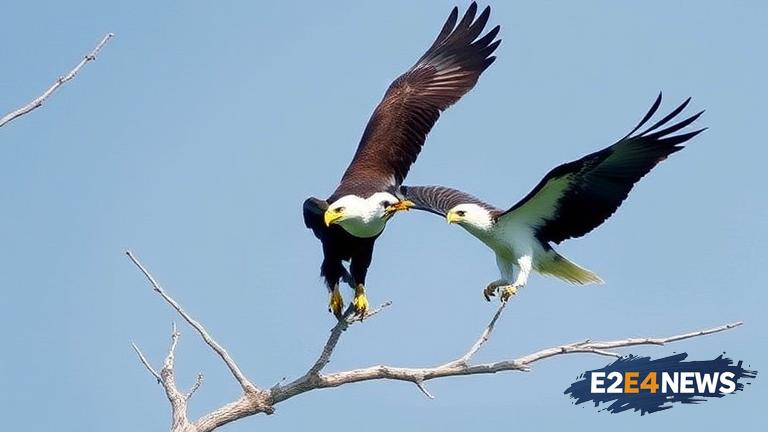The Chesapeake Bay, a vital estuary on the East Coast of the United States, has witnessed a remarkable recovery of bald eagles in recent years. Once on the brink of extinction, conservation efforts have paid off, and the bald eagle population has begun to thrive. However, this resurgence has raised red flags for another iconic bird species, the osprey. Experts warn that the increasing bald eagle population may lead to competition for resources, potentially threatening the osprey population. The osprey, a fish-eating bird of prey, has also made a significant recovery in the Chesapeake Bay region. However, the bald eagle’s dominance and aggressive behavior may force ospreys to compete for food and nesting sites. This competition could have far-reaching consequences, including reduced osprey populations and altered ecosystem dynamics. The Chesapeake Bay is a critical habitat for both species, providing an abundance of fish and other prey. However, the bay’s ecosystem is fragile and faces numerous threats, including pollution, climate change, and overfishing. As the bald eagle population continues to grow, it is essential to monitor the impact on ospreys and other species in the ecosystem. Conservation efforts must be adapted to address the potential consequences of the bald eagle’s recovery. This may involve implementing measures to reduce competition for resources, such as providing alternative nesting sites for ospreys. Additionally, researchers must continue to study the complex relationships between species in the Chesapeake Bay ecosystem. By understanding these dynamics, conservationists can develop effective strategies to protect and preserve the region’s biodiversity. The recovery of bald eagles is a testament to the power of conservation efforts, but it also highlights the need for ongoing vigilance and adaptability. As the ecosystem continues to evolve, it is crucial to address the potential consequences of the bald eagle’s resurgence. The osprey population is not the only species that may be affected, as the bald eagle’s dominance could have cascading effects throughout the ecosystem. Therefore, it is essential to adopt a holistic approach to conservation, considering the intricate relationships between species and their environments. The Chesapeake Bay is a unique and vital ecosystem, providing a habitat for numerous species and supporting commercial fisheries. The region’s conservation efforts must be tailored to address the specific needs of the ecosystem, taking into account the complex interactions between species. By doing so, we can ensure the long-term health and resilience of the Chesapeake Bay ecosystem. The bald eagle’s recovery is a significant achievement, but it is only the first step in preserving the region’s biodiversity. Ongoing research, monitoring, and conservation efforts are necessary to protect the osprey population and maintain the delicate balance of the ecosystem. The consequences of inaction could be severe, with potential declines in osprey populations and altered ecosystem dynamics. Therefore, it is essential to address the potential consequences of the bald eagle’s recovery and develop effective strategies to protect the Chesapeake Bay ecosystem. The region’s unique biodiversity and ecosystem services make it an essential area for conservation efforts. By working together, we can ensure the long-term health and resilience of the Chesapeake Bay ecosystem, preserving the region’s natural heritage for future generations.
